DjangoBooks.com
Welcome to our Community!
Categories
- 20K All Categories
- 1.1K General
- 478 Welcome
- 59 Archtop Eddy's Corner
- 146 CD, DVD, and Concert Reviews
- 385 FAQ
- 26 Gypsy Jazz Italia
- 27 Photos
- 203 Gypsy Picking
- 21 Unaccompanied Django
- 15 Pearl Django Play-Along Vol.1
- 17 Gypsy Fire
- 45 Gypsy Rhythm
- 1.4K Gypsy Jazz University - Get Educated
- 131 Gypsy Jazz 101
- 228 Repertoire
- 221 History
- 708 Technique
- 51 Licks and Patterns
- 6 Daniel Givone Manouche Guitare Method Users Group
- 20 Eddie Lang Club
- 1.3K Gypsy Jazz Gear
- 803 Guitars, Strings, Picks, Amps, Pickups and Other Accessories
- 461 Classifieds
- 49 Recording
- 62 Other Instruments
- 18 Violin
- 5 Mandolin
- 22 Accordion
- 7 Bass
- 10 Woodwinds
- 348 Gypsy Jazz Events
- 143 North America
- 110 Europe
- 95 International
In this Discussion
July Song Of The Month--Night & Day
This month's tune is a favorite of mine to call, and my trio usually plays it with a latin feel. It's commonly called in my area but I'm always excited to play it, maybe due to the unusual AAB form. We play it in D. It was written by Cole Porter in 1932 and originally appeared in the Broadway musical (and subsequent movie) The Gay Divorcee. The movie version famously featured Fred Astaire singing it. Django first recorded it in 1938, but my favorite version is from his quartet sessions from Paris in October of 1953. Here's a link to it, note Django's superb archtop tone--
Other notable versions (there are many) include those by Frank Sinatra, Sonny Rollins and Stan Getz with Bill Evans. I'll post the chart that we use later. Happy 4th, forum.
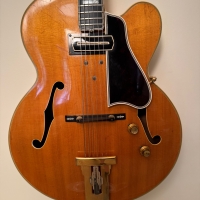
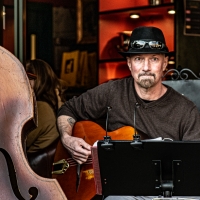
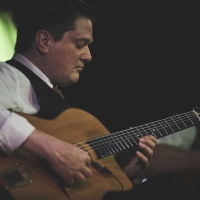

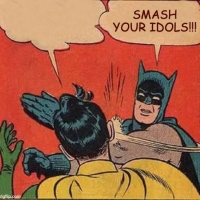
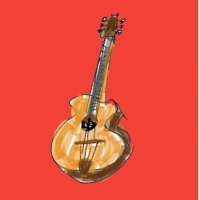

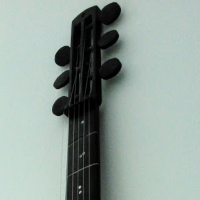









Comments
October of 1953? Django plays well for a dead guy! 🧟
Here's a nice one from Seb
Good catch Wim, you're now officially the editor of Song Of The Month! When I looked at old friend Heinz Becker's post on youtube, I forgot that his date of 10/3/53 meant March 10, not October 3. Forgive my unintended American arrogance!
@MikeK Indeed a superb archtop sound. And what I like especially is the intro which is omitted in most of the versions of "Night and Day"! So here is another one with intro, even closer to the Porter composition, sung by Ella Fitzgerald:
Below I quote some notes concerning the recording from the site "Swing and beyond" https://swingandbeyond.com/2021/08/10/night-and-day-1940-charlie-barnet-with-bernie-privin-and-bill-miller-1942-frank-sinatra-1956-ella-fitzgerald/
“Night and Day”
Composed by Cole Porter; arranged by Buddy Bregman.
Ella Fitzgerald accompanied by Buddy Bregman and a studio orchestra recorded for Verve Records on March 27, 1956 in Los Angeles.
Buddy Bregman, directing: Ella Fitzgerald, vocal; Conrad Gozzo, first trumpet; Pete Candoli, Maynard Ferguson and Harry “Sweets” Edison, trumpets; Joe Howard, Lloyd Ulyate, Milt Bernhart, tenor trombones; George Roberts, bass trombone; Bud Shank, first alto saxophone; Herb Geller, alto saxophone; Bob Cooper and Ted Nash, tenor saxophones; Chuck Gentry, baritone saxophone; Paul Smith, piano; Barney Kessel, guitar; Joe Mondragon, bass; Alvin Stoller, drums; Corky Hale, harp; 7 violins, Mischa Russell, concertmaster; 2 violas; Edgar Lustgarten and Robert La Marchina, celli.
The music:
In the verse for “Night and Day,” arranger Buddy Bregman creates a subtle but rhythmically intensifying background for Ella’s crystalline voice: drummer Alvin Stoller’s tom-toms, underlining the verse’s lyric, are gradually supplemented by the pizzicato strings as the register of the music waxes. Then Ella soars off into the main melody of the first chorus. (I often think of this musical sequence when I am on an airplane that begins to taxi, increases in speed, and then takes off.)
The accompaniment fashioned by Bregman for Ella Fitzgerald’s voice on the main melodies of “Night and Day” are those of a brass and reeds swing band, augmented by rather lush strings. Ms. Fitzgerald’s singing is beautifully on pitch and melodic, though always swinging, through the first chorus. On the second chorus, she deviates a bit from the melody as written as she builds to the climax of the performance. The quality of her voice throughout this performance is perfection. The subtle piano snippets behind Ella are provided by her regular accompanist of the time, the talented Paul Smith.
Love this 1953 recording, I always thought Django sounds like he's moving into a new element here, there are fewer 'canned' licks and his playing is just melodic and tasteful. The hot club seems a distant memory, and if I hadn't known already I wouldn't even guess it was Django playing, but a bop guitarist from decades later. Would have loved to hear more of this side of Django, so it's a bummer his life was cut short soon afterwards.
For a bit of fun, listen to the first 5 seconds of the video from @MikeK original post at 0.5x speed and then 0.75x speed. Click the gear icon ⚙️ and then select the "Playback speed". How perfect the timing is on those demisemiquaver (or whatever the heck they are) in the verse. I don't think I can play it that accurately even at 0.75x. Some picking practice with the metronome is in order...
Any suggestions how to think about/simplify bars 9-12 for soloing? thx
I’ve always been partial to the 1932 version by Fred Astaire...
***
One of my mom’s cousins worked for an American bank in Paris in the 1930’s and would often go watch Django and Stephane play in the evening.
One night he was present to see Cole Porter come onstage and play the piano during the band intermission.
What an awesome array of musical talent in one room!
Edgar Degas: "Only when he no longer knows what he is doing does the painter do good things.... To draw, you must close your eyes and sing."
Georges Braque: "In art there is only one thing that counts: the bit that can’t be explained."
@Bones if you can solo over Djangology, you can solo over those bars. This little 8 bar section was probably the basis for Djangology.
@Buco haha yeah I have trouble over that section too. Any simple ideas for novice solo players? I usually just skitter around in G :-/
Here's the chart we use:
The DFB has it in C, but we do it in D.
Bones, here's what I think about as I'm soloing over bars 9 thru 12:
Over 9 & 10, try something in D major, like E dorian (I know GJ is supposed to be arpeggios, but I like to sprinkle in modal stuff). Over 11 & 12, try an F diminished arpeggio. Then, when that cycle comes around again in the B section, I like to switch it (F diminished arp over the 1st 2 bars in the line, E dorian over the 2nd 2 bars). I hope that helps. It's a strange sequence, chromatic movement but half diminished/-7/-7/diminished. I struggled with soloing over it until I came up with that idea. To be honest, I'm not really sure why it works, but it does, to my ears. Maybe some more knowledgeable theory hounds here can explain why. Interestingly, I've heard some solid players stumble over it, so you're in good company to ask about it.
The DFB has it in C, but we do it in D.
Yeah, I learned it in D too and I think that is how most GJ style bands play it. When we had our clarinet in the band, we played it in C because there is one certain note in the melody that caused her a fingering issue. Not impossible, just awkward. Maybe one of the reed players around here know what I'm talking about or could explain it better.